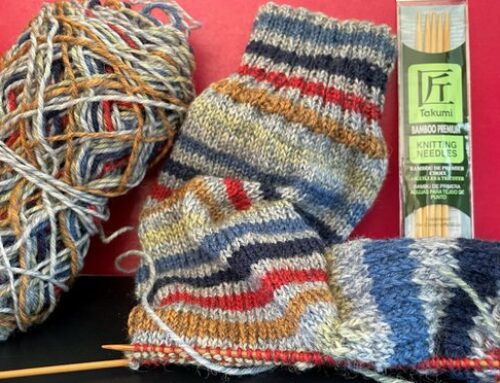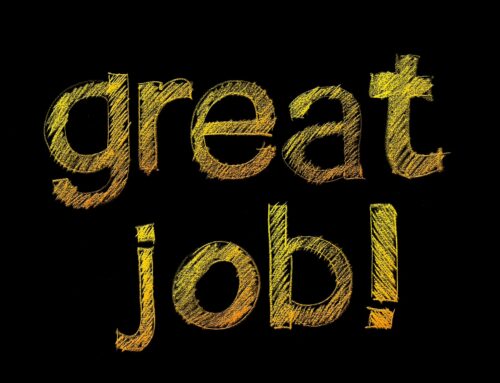 How do you decide what to pay attention to in a world where an onslaught of images and messages is constantly delivered by way of a myriad of devices along with an ongoing scan of in-person threats, opportunities and attractions our brains must prioritize every second? How do you maneuver around the minutiae of everyday life and keep your focus trained on aspirations and achievement? One answer is to train your brain to navigate past the noise and focus on what is important.
How do you decide what to pay attention to in a world where an onslaught of images and messages is constantly delivered by way of a myriad of devices along with an ongoing scan of in-person threats, opportunities and attractions our brains must prioritize every second? How do you maneuver around the minutiae of everyday life and keep your focus trained on aspirations and achievement? One answer is to train your brain to navigate past the noise and focus on what is important.
Our brains are wired to filter information through the “reticular activating system (RAS),” located in the brain stem and thought to play a role in many important functions. The RAS contributes to the control of sleep, walking, sex, eating and elimination. Most important to goal attainment, the RAS can consciously focus attention on something, acting as a filter that tamps down the effect of stimuli and helping to prevent the senses from being overloaded.
As a professional coach, I work with high-performing, high-status people at achieving maximum results. My clients work hard between sessions. They collect data, perform research, test out new behaviors, evaluate results, track progress, and comb their calendars to find pockets of time to be more productive or have more fun. A coaching tool I sometimes recommend is the creation of a visual instrument for goal attainment known as a vision board.
Vision boards are a goal-setting technique used to help clarify, concentrate and continue focus on one specific professional or personal goal. It is especially useful when the gap between reality and the desired outcome seems impossible to bridge. To make one, you collect resonant images, including pictures, quotes and words that represent whatever you want to be, do, or have in your life. The efficacy of visual goal setting has been touted by successful athletes and entertainers such as Jim Carrey, who famously wrote himself a check for $10 million dollars and dated it 10 years in the future. In the memo field he wrote, “For acting services rendered.” He kept the check in his wallet as a constant reminder of his goal. Of course, he also worked hard.
I recently met with a law firm partner who wanted to have a lunch-and-learn event for the staff that would also be fun. We talked about various topics and ultimately a vision board workshop was selected. When I told friends I was doing this at a law firm, some visibly blanched. They thought it incongruous that lawyers would be interested, engaged and open to the idea of goal setting in an unconventional, imaginative and enjoyable way. But they were. “Lawyers like to be creative, too,” I found myself saying.
I have been making vision boards since 2008 (when I was a lawyer) and can directly link each one to specific goals achieved. Using the vision board technique, I created a palpable, resonant, feeling embodiment of what I wanted to achieve, acquire and attain in my life at the time. Some boards focused on career goals and others with physical well-being and fitness.
By looking at my vision board for a few minutes every day, I was easily able to hold my aspirations at the top of my mind. Have you ever noticed that when you are in the market for something—say a pair of eyeglasses—it suddenly seems like everyone is wearing spectacles? It’s not that more people are vison-impaired. This phenomenon occurs because you were looking and noticed what would have been there anyway. Vision boards help perceive opportunities you may have ignored otherwise because you’re training your brain to look for it. In this way, you program your RAS to bring what you want into relief so you will see it.
As advance preparation for the workshop, I asked the participants to think about something they’d like to change or a goal to focus on and look for pictures, phrases and words that capture or convey it. The most important aspect is the feeling produced when looking at the images. It should feel good to see your success reflected in whatever you select.
I arrived at the law firm with magazines, poster board, glue, glitter and colored pens and began with some history and information about visual goal setting. I shared examples and demonstrated how to look for and select images aligned with the central goal of the board. Then, they dove in.
For the next hour, they focused on accurately capturing the intent of the board—to reflect not only the attainment of a goal, but also the feeling that having it will bring. It is important to choose images do not prompt negative emotions. For example, if you want to lose weight, you would select images that align with what it would look like when you attain the goal, not where you are now. Unlike putting an unflattering picture of yourself on the refrigerator as a deterrent, vision boards are intended to inspire and encourage. If you want to start your own business, you would look for images that represent your vision or quotes from successful entrepreneurs.
As they collected images, the room began to warm up, filling with vitality and hum. The participants told stories, shared pictures and had fun. They got creative with the supplies and produced beautiful boards. You may not always know what someone else’s vision board is intended to generate. It doesn’t matter. The only person it needs to make sense for is its creator.
There’s an expression that goes “I’ll believe it when I see it” and vision boards operate in that realm. Beliefs are often just thoughts you’ve held for a long time and you can chip away at self-limiting ones in a variety of ways. Images operate on a more subconscious level than an agenda or to-do list. They evoke emotions, which can be more reliable than thoughts when it comes to finding what fulfills you.
In 2008, I made a vision board with a statement at the top that reads “I deserve to be happy at work.” I filled it with images of people who looked like they loved their vocations. It was the beginning of a transformation. Action steps are still required to get where you want to go, and a vision board is intended to assist your ability to envision what you want, maintain the idea of it as you go through the day, and permit opportunities to get through by lowering your resistance to change. That is what transformation is, after all.
If I hadn’t made the vision board, perhaps I would not have been paying attention when a total stranger told me back when I was a lawyer that I would make an excellent coach. I am grateful that I was.
Reprinted with permission from the May 25, 2017 edition of “The Legal Intelligencer” © 2017 ALM Media Properties, LLC. All rights reserved. Further duplication without permission is prohibited. For information, contact 877-257-3382, reprints@alm.com or visit www.almreprints.com.







